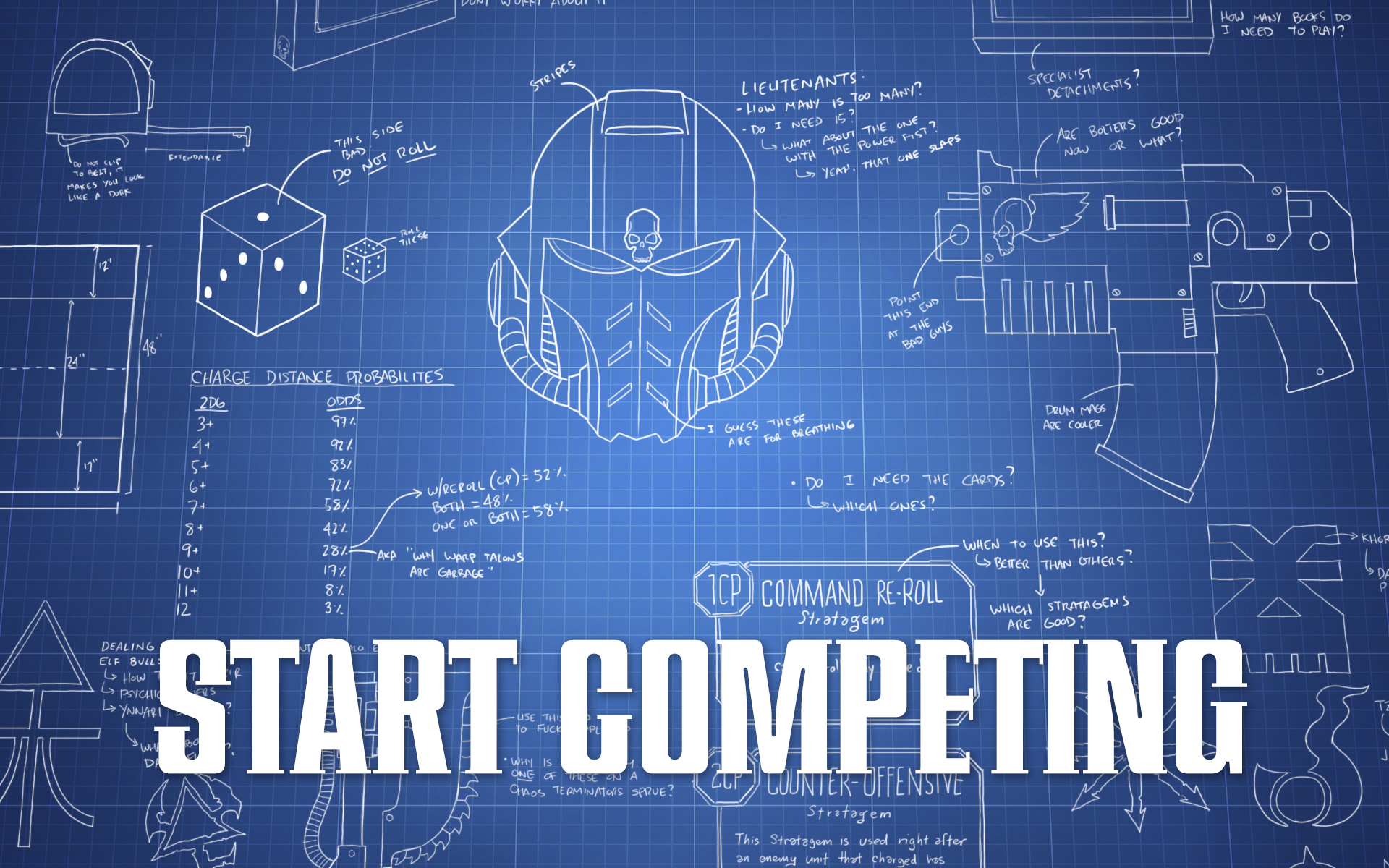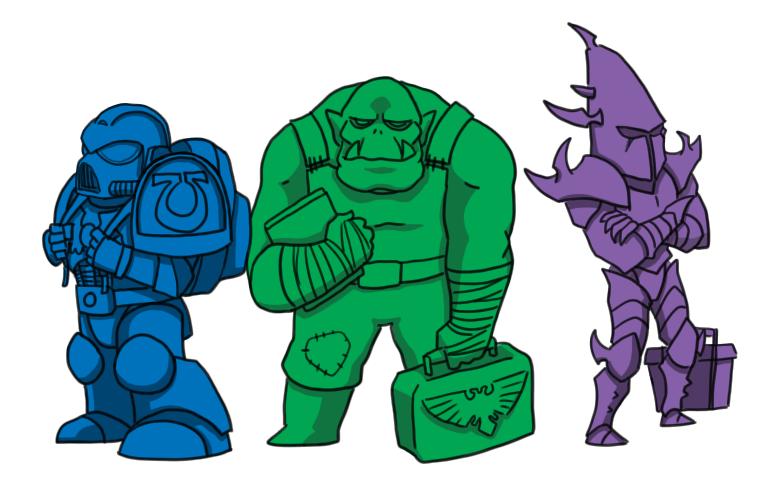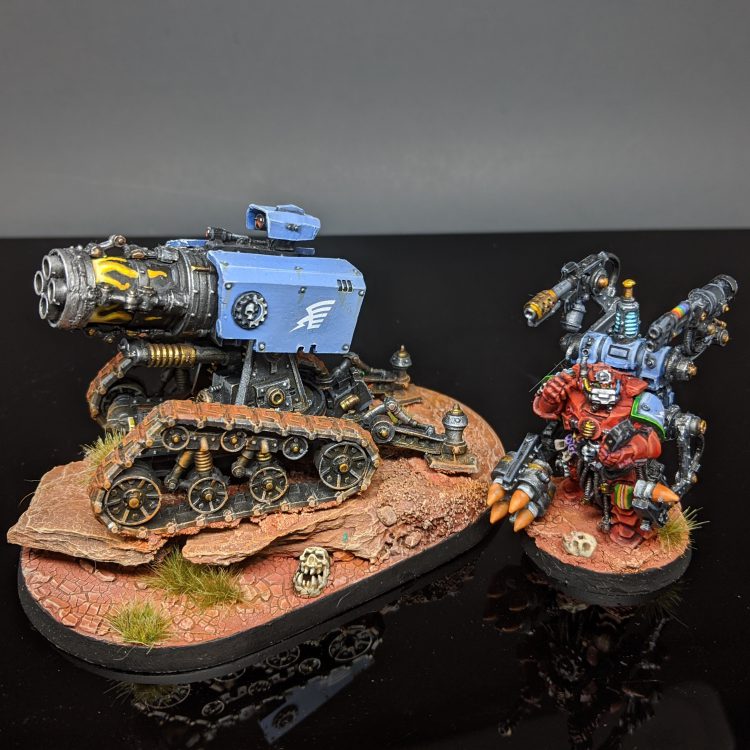What are units for?
More specifically, what are your units, the ones you’ve chosen to put in your army, for?
Lockdown (quite rightly) continues, and in the intrepid search for timeless competitive content I’m descending ever further through the stages of one of those galaxy brain memes as I try to distil more of my thought processes around competitive play into tangible sets of principles.
A couple of weeks back I turned some of those musings into a guide to assessing an opponent’s army list. This proved very popular (I went on 40k Today to talk about it) and was an enjoyable challenge to put together. Since then one of the upcoming tasks I’ve been contemplating is how to structure our “superfaction” Start Competing guides, as the list of outstanding faction ones is getting pretty short (Corrode: we’ve even gotten on with updating the ones that are out of date, because we’re just that good to you).. I started going through the Imperium factions in my head and asking myself how I would define what each was good at, and where I ended up was that the easiest way to do so was to talk about what roles in an army each is good at filling, and any units they have that are particularly outstanding.
As an example, one of the things we touched on in the revised version of Start Competing: Astra Militarum was that it’s currently pretty popular to combine Guard and Blood Angels, and the shorthand I would use to explain why is that Guard are good at providing ranged threats and board control while Blood Angels provide strong push threats and reactive units. The thing I immediately realised, of course, is that all these terms make sense to me, but they’re very much a mish-mash of terminology I’ve picked up from other media and built into an shorthand that I use internally and in my articles.
I’m not trying to say those terms are revolutionary or that I’ve invented them – all four are familiar to most competitive players – but to me they all have a strong meaning and define a clear “role” or “function” for a unit on the battlefield. Because I am, well, me, and thinking way too hard about 40k is my brand, that started my mind churning on some questions:
- If some clear roles exist, can we build a more complete list of them?
- Does doing that help us understand any aspects of the game better?
Having considered it, I think the answer to both questions is yes. One of the things we like to hammer home here is that in order to get better at competitive 40K you need to learn to make a plan. As immortalised in the Princess Bride, an important part of making a plan is understanding your assets. However, the range of possible assets you can have on your side is spectacular – as helpfully documented by the GW webstore (saving me from sitting on my sofa with one of those clicky things), the Space Marine codex contains 76 datasheets and the total number printed in “current” books is now over 1,000 before you start counting Forge World. The number is inflated a bit by duplicates between Marine books, but that’s still a whole lot to have to consider and an overwhelming amount of complexity to absorb if you look at each in isolation.

Coming up with a set of roles that we can fit units into both helps to break that complexity down and equips us with concepts and a shared language to analyse some key parts of the game. Most notably, it provides some powerful tools for thinking about how your units come together to form an army, and by extension some things to consider when putting together army lists. If we can build a list of roles that we think are useful to armies on the battlefield, that can also help us assess an army’s strengths and weaknesses by considering what roles are and aren’t filled in a given list.
Now hang on, you might be thinking, didn’t we already talk about this last time? Kind of, and that’s why this is badged as a part two for the previous article. The previous piece was focused on identifying the high-level strategic capabilities of an opponent’s army to help build a game plan. This time we’re delving a bit deeper and looking at the building blocks of an army, asking why certain units equip an army with certain capabilities. We’re also going to be thinking a bit more about our own armies than those across the table from us, and going back to the list crafting step of preparing for a game. It’ll definitely still help you improve your ability to make those pre-game assessments too, as at least for me thinking about units in this way is part of building that strategic picture, but how to specifically use these roles to do that is something we’ll circle back to at the end rather than our focus.
On that note, this article is going to be split into three sections:
- What roles exist, and how units fit into them.
- How that impacts army construction, strengths and weaknesses..
- Some worked examples of how units map on to roles in some sample armies.
The Roles
With a bit of help from the rest of the Goonhammer team, I’ve come up with what I think is a reasonable starting point for a set of these, sufficient at least to guide further discussions. For each of these, I’ve outlined what they are why they’re useful, and included a few examples of commonly seen competitive units that are particularly good at them. I’ve also divvied them up into three categories. Just before we go onto the list, a few of ground rules, and please do read these before sending me long explanations of why some of my examples are in the wrong category:
- It is not mandatory for every army to contain units in all of these roles – indeed plenty of them won’t. Examining what roles are and aren’t filled in a list can help us understand what its strengths and weaknesses might be, and we’ll get to that later, but you absolutely shouldn’t take away from this that if your list hasn’t filled all of them I’m saying it’s bad.
- Units don’t fit exclusively in one role – many are capable of performing at least two, and will often have more that they can fulfil in certain matchups or situations. I’ve tried to pick, for my examples, units that are especially good in one of them, but even for them I’m not saying they can’t do other things – they probably can.
- Some matchups can blunt a unit’s ability to act in its normal role. Anti-tank firepower stops being a major ranged threat if your opponent has no tanks.
With that out of the way – here’s what I’ve got. Prepare your extremely mad comments.
Offensive Roles
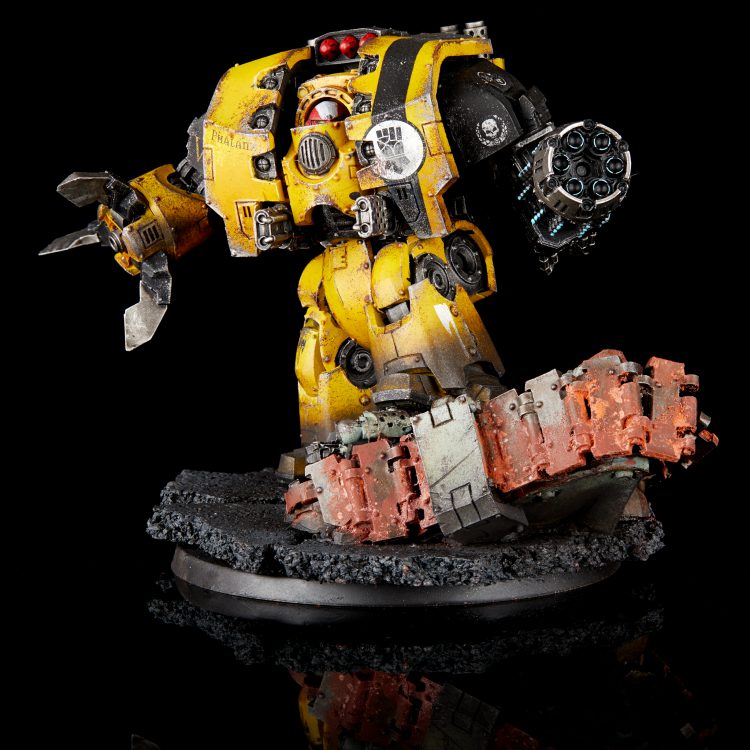
These roles cover different ways in which units can provide an effective offence. Identifying the best units in these roles in an army will help you to understand where and how they project the most threat towards opposing forces.
Push Threat
Description: A unit with sufficient mobility and (usually short-ranged) offensive power to launch meaningful attacks on parts of the board where the opponent’s forces are strong.
Why it matters: Push threats allow you to dictate the flow of the game – an opponent has a choice of dealing with them, avoiding them or taking heavy damage. They also allow you to attack and claim objectives that your opponent is trying to defend.
Aliases/similar: Melee threats, bombs (for variants coming out of deep strike), rush units, face units, distraction Carnifex
Examples: Sanguinary Guard, Khorne Berserkers, Custodes Jetbikes
Ranged Threat
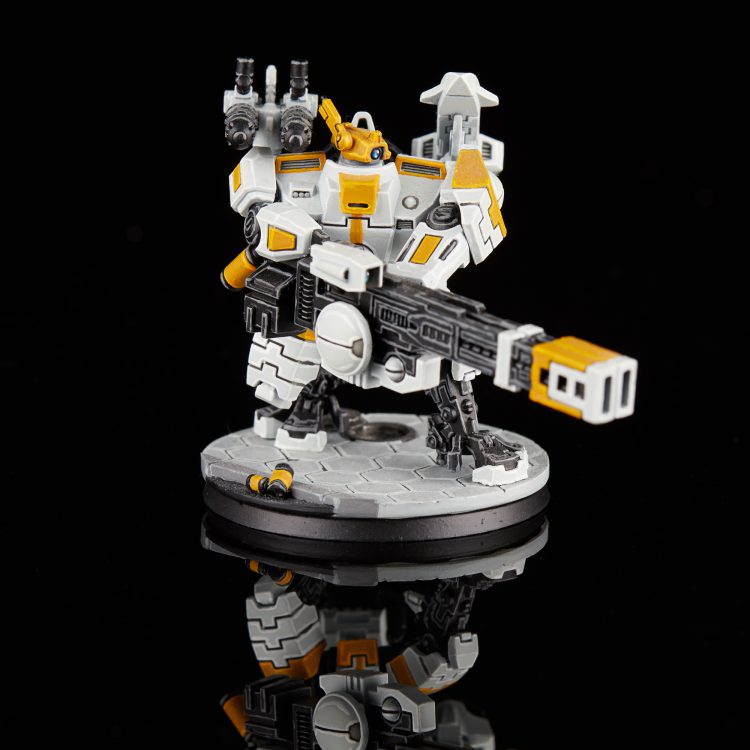
Description: A unit capable of inflicting meaningful damage on the enemy’s forces at medium or longer range.
Why it matters: Ranged threats allow you to neutralise your opponent’s best units before they can realise their value. They also allow you to score kills against an opponent playing defensively.
Aliases/similar: Gunline units, shooting threats, dakka.
Examples: Dark Reapers, Riptides, Doomsday Arks
Reactive Threat
Description: A unit capable of doing disproportionate damage when used in specific situations, such as countercharging into a push threat or when a highly suitable target is available.
Note:This one could be argued to be worth splitting into multiple roles. I’ve come down on the side of keeping it as one, but I’d be interested in feedback on this.
Why it matters: Units in this category constrain your opponent’s options by threatening to punish them for adopting certain lines of play, or shore up your army’s weaknesses by providing a way of responding to certain adverse situations.
Aliases/similar: Countercharge units, precision threats, assassination units, herohammer units.
Examples: Smash Captains, Fusion Coldstars, Yvraine
Force Multipliers
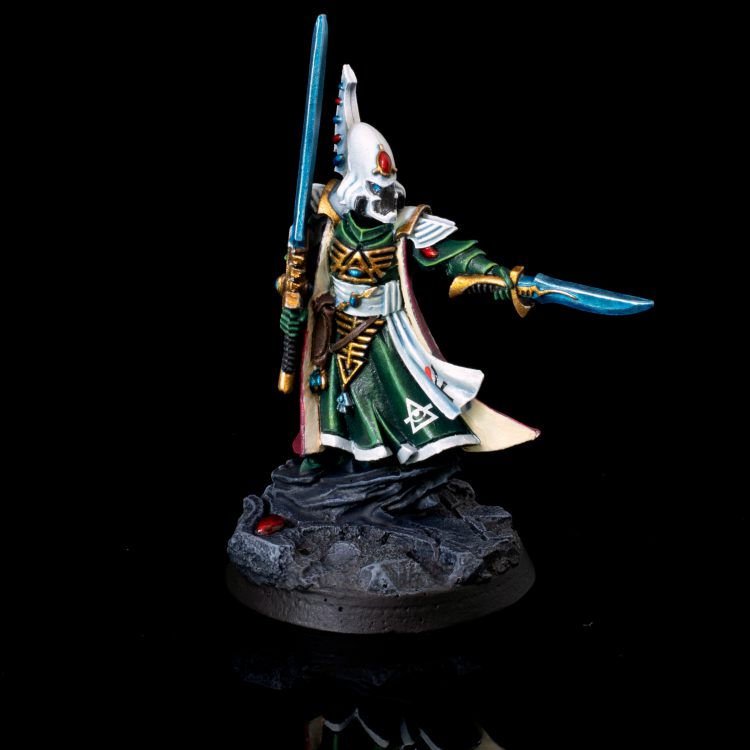
Description: A unit that provides offensive value by augmenting the capabilities of your other units.
Why it matters: Providing buffs to other units allows you to dynamically increase the output of whichever of your threats is best suited to a situation. By providing either aura buffs or by stacking single target buffs on one unit, force multipliers also often provide access to a disproportionately large increase in output for their cost.
Aliases/similar: Buff units
Examples: Space Marine Captains, Farseers, Genestealer Primus
Positional Roles
These roles cover different ways in which units can control the board and objectives. Identifying any of these where an army is lacking can help identify ways in which it risks losing control of sections of the battlefield.
Board Control
Description: Units in this role provide you with the capability to durably or proactively control or threaten sections of the board.
Why it matters: Controlling the board restricts where your opponent can go, allows you to score objectives, and mitigates the ability of push threats to reach your ranged ones.
Aliases/similar: Board flood, scout deploy, bodies, space control
Examples: Valorous Heart Sisters, Ork Boyz, Incursors
Tarpit
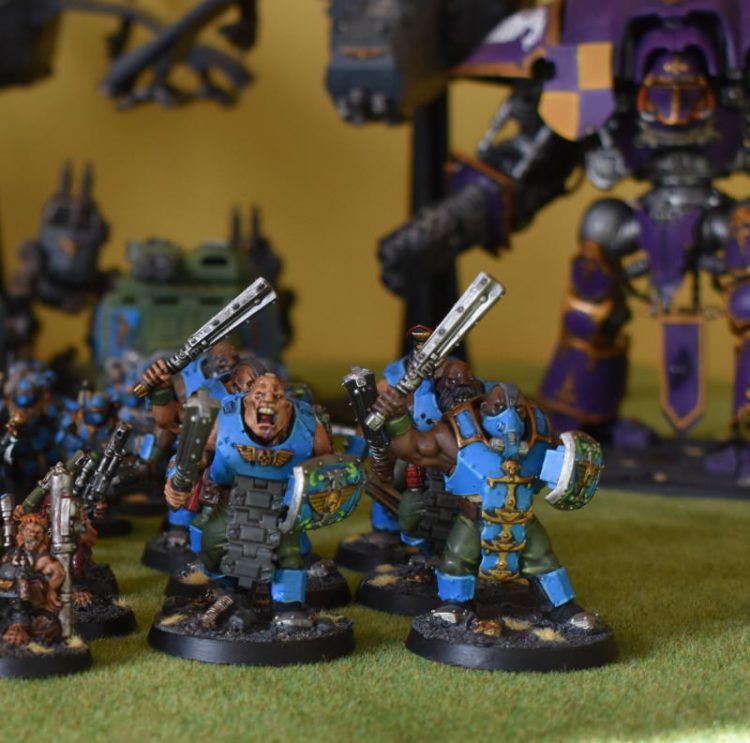
Description: These units are incredibly hard to shift, allowing them to make taking control of a section of the board excessively difficult for your opponent.
Why it matters: A very tough unit positioned on an objective can keep it secure for you while you fight for control of others, or eliminate your opponent’s threats. It can also draw your opponent’s push threats to a position where you can safely deal with them.
Aliases/similar: Tanks
Examples: Bullgryn, Grey Knight Paladins, Zoanthropes.
Screening
Description: Units that provide sufficient coverage and bodies at a cost efficient price that you are happy to sacrifice them to protect your better ones.
Why it matters: Some types of attack, such as fast melee units and psychic powers, can be best mitigated by putting something in their way, and will do disproportionate damage otherwise. Screening units allow you to prevent that.
Aliases/similar: Screens, sacrificial units, bubblewrap.
Examples: Guard Infantry Squads, Storm Guardians, Grots
Backfield
Description: Units that are especially well suited to sitting in your own deployment zone, through being easy to hide, difficult to remove at range, or able to contribute damage output while in this position.
Why it matters: Many missions will have an objective in your own deployment zone, which you ideally want to keep a unit occupying without it costing you too much. Some armies also have powerful deep strike capabilities, and preventing them using this to deploy units behind your main force is vital.
Aliases/similar: Backline units, castle units
Examples: Thunderfire Cannons, Night Spinners, Tech Priest Enginseers
ObSec
Description: Units with the objective secured rule, allowing them to claim objectives against a greater number of enemies.
Why it matters: ObSec units allow you to “flip” an objective at a key moment in the game, which can have a heavy impact on the scoring in ITC in particular. You ideally want units that do this to be operating as either screens or board control as well, but you generally do want some units specifically with this ability even if you do those things well with other units.
Aliases/similar: Troops
Examples: Intercessors, Dire Avengers, Breacher Teams
Sort of in Between Roles
Harassment
Description: Units that threaten to impede or assail enemy positions away from the main body of their force if unchecked.
Why it matters: Often coming in from deep strike, these units either force your opponents into more defensive play, or punish gaps they leave in their defences. Can also apply to fast vehicles ably to bully charge exposed ranged threats.
Aliases/similar:
Examples: Sicaran Infiltrators, Kommandos, Venoms
Special Roles
These roles cover two additional motivations for why units can be worth including in a list, even if they do not excel at any of the others.
Slot Fillers
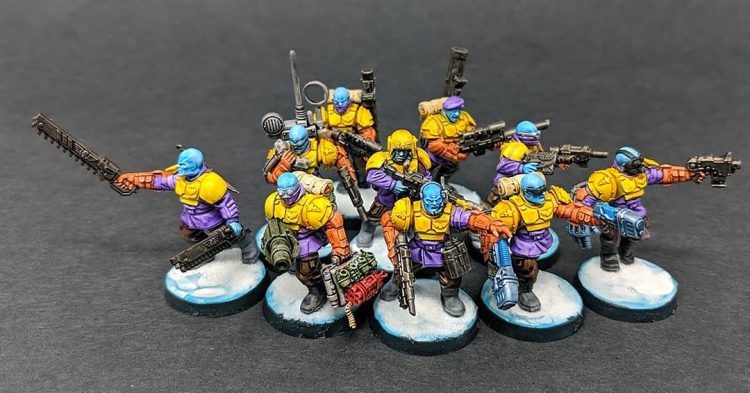
Description: A unit included at least partially to fill a complete detachment, or allow inclusion of other units in a few unusual cases.
Why it matters: Command points are delicious and moreish and many armies ceaselessly thirst for them. With that in mind, including a few otherwise weaker units to make up a Battalion or more often a Brigade is often valuable.
Aliases/similar: Filler, tax.
Examples: Brood Brothers, Servitors (for Relic units), Brimstone Horrors
Counters
Description: A unit included because it provides the capability to disable your opponent’s key abilities in certain circumstances, or remove their ability to harm some of your other units.
Why it matters: Some armies rely on powerful buffs or abilities to make their threats operate. Disabling these leaves them at a substantial disadvantage.
Aliases/similar: Meta picks, spoiler units, defensive picks
Examples: Four Armed Emperor or Black Heart units in GSC/Drukhari, Tau Drones, Graia Skitarii
Impact On Armies
For me, the above list provides a sufficiently comprehensive set of roles in which to bucket the units I add to my army, and once that’s in place there are quite a few takeaways that arise from it, which we’re going to go through in this section. The purpose of thinking about units this way is to try and understand how their individual capabilities come together to inform what an army is capable of, because as I banged on about in the first part, games are won and lost by armies.
Thinking about units in terms of the roles they fill helps us do two things – build better armies, and understand what an army’s weaknesses might be (either our own or our opponent’s). The fun thing here is that even if you don’t totally agree with the set of roles I’ve come up with a lot of what’s in this section can still help you, because as long as you’ve got your own version of the list all the army building tips will still apply, and you can very likely follow through and come up with your own set of weaknesses that a deficiency in a role might bring.
Building Armies
Once we’ve bought in to the idea that units can and should be sorted into roles, there are a whole bunch of implications we can consider when building lists. Here are five of the most important.
Every Unit Should Have a Relevant Role
If a unit is in your list and you can’t articulate one or more of the roles that it’s helping to fill, it probably shouldn’t be in the list at all. A unifying feature of most of the truly terrible units in 8th edition is that there isn’t really any role they’re good at filling – a great example is Chaos Mutilators, a push threat with a lack of mobility and no ranged attacks, leaving them with no useful way to contribute.
As long as you’re at least reasonably in-tune with your chosen faction (and if you’ve read this far you probably are) you’re likely to have dodged the truly bad units, so the pit traps you need to look out for in this area are:
- Including a unit where they can’t perform their role adequately in your army. A good example would be including a Farseer with Guide in an army without sufficient shooting units.
- Including insufficient units in a role to get your army over the line of being able to leverage it.
The first of these two is pretty obvious and is something you should quickly pick up on if you’re being careful to assess your army’s performance after games. The latter is more subtle. When looking at a list of roles like this it’s easy to fall into the trap of thinking you must fill all of them, and if you end up with an army that doesn’t really fulfil one of them you could decide to throw in a token unit aimed at that role to try and cover the weakness.

That’s often a mistake. While some units are powerful enough to cover a role by themselves, plenty aren’t, and spending points on an inadequate commitment to a role might still not actually enable your army to meaningfully use it. I tend to think of armies as having one of three levels of capability within any role:
- Good – performing well at this role is a strength of the army.
- Adequate – the army can perform the role sufficiently to achieve things.
- None – the army can’t perform the role.
If you are starting from a baseline of having no capability in a role, it’s only worth adding units if you’re getting yourself from the “none” bracket to the “adequate” one. One of the most common mistakes I see when going through lists is a “token” shooting unit like a lone lascannon/missile dreadnought added into what’s otherwise a push threat heavy list. The unit is intended to shore up the army’s lack of ranged threats, but it doesn’t actually accomplish that. The ranged threat role wants us to be able to do meaningful damage to the enemy at a distance, and despite what people might tell you about how lethal 8th is a “token” ranged unit often can’t do that by itself. Coming up against any army that has real ranged threats, a token commitment to it will just get immediately blasted off the board without doing its job (barring some absurd high rolls), leaving it as wasted points.
This is an easy trap to fall into, and if you’re finding your armies not performing on the battlefield it can be worth taking a step back and seeing if you’ve ended up with a very light investment into three or four roles that could be consolidated into making you good at one of them – you’ll probably find you win more of your games.
Equip Units for Their Role
Way, waay back when we were starting Start Competing out, one of the rules of thumb we put in was not to spend too many points on random unit upgrades. Many units offer you a diverse range of weapons and wargear you can stick on them, and the vast majority of them aren’t worth it.
Thinking about units in terms of their roles lets us understand why. 8th is a very streamlined game compared to previous editions and tends to reward using units in very focused ways, but a lot of these choices are legacies of older editions that were a bit less punishing.
The cold, brutal reality of 8th is that you should only be paying for a unit upgrade if:
- It makes a unit better at their designated role.
- It makes a unit meaningfully able to engage in an additional role, or broaden the targets for its main role.
Now the word “meaningfully” is obviously doing a lot of heavy lifting there, and there’s a degree to which you need to build up the judgement to assess that, but we can use some examples to illustrate it:
- Adding a missile launcher team to a Guard infantry squad is usually a bad use of points. You pay 10pts (a 25% increase on the squad cost) for a weapon that will either fire ineffectively or not at all, and doesn’t inflict meaningful output when it does.
- An advanced targeting system on a Riptide is a good use of points. It costs 18pts (~7% increase) and meaningfully improves the Riptide’s ability to act as a ranged threat – firing at Intercessors with no other buffs, it increases damage output on the main gun by 33%.
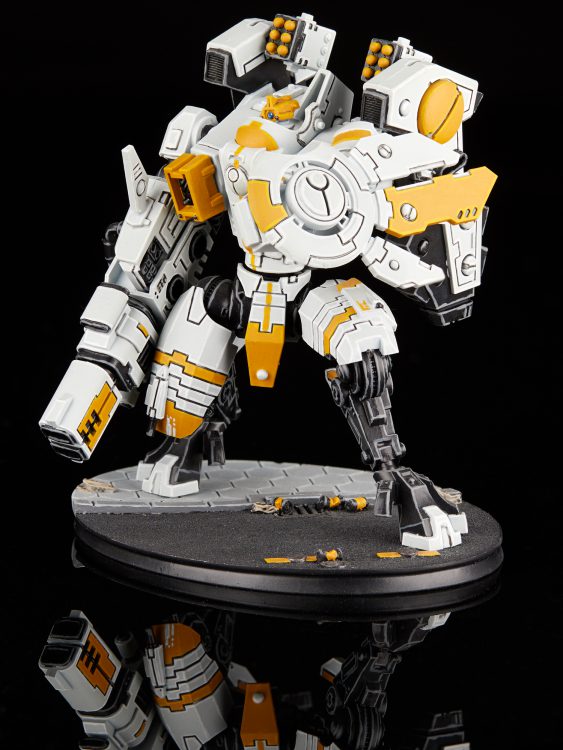
This principle can also be extended to choosing between variable options in mandatory slots for a unit. Continuing with our Riptide, for its secondary weapon set you have to select between:
- Plasma rifles
- Smart missile systems
- Fusion blasters
The Riptide’s role is a ranged threat that wants to engage at a distance dictated by its main gun (36″), and this makes the smart missile systems by far the best choice – they’re the highest range of the options (30″) and thus will be active most of the time. In addition, their high shot count and ability to ignore line of sight broadens the set of units the Riptide threatens while engaging in its preferred role, making them overwhelmingly the best choice of the three.
Make Sure You’re Playing to Your Strengths
If you’re trying to make an army that’s good at something, is it actually good at it? Most of the roles map onto activities that might form elements of your game plan – if you want to eviscerate your foe in melee, you definitely need some push threats. Thing is, your opponent is (I assume) going to try and stop you from achieving your goals, so if you want something done right you need to make a reasonable commitment to it. This is the next level from making sure you don’t have any pointless units in your army – now you need to look and make sure that if excelling at one of the roles is a key part of your plan, you have suffiicent units dedicated to it or supporting them that your army can do it well.
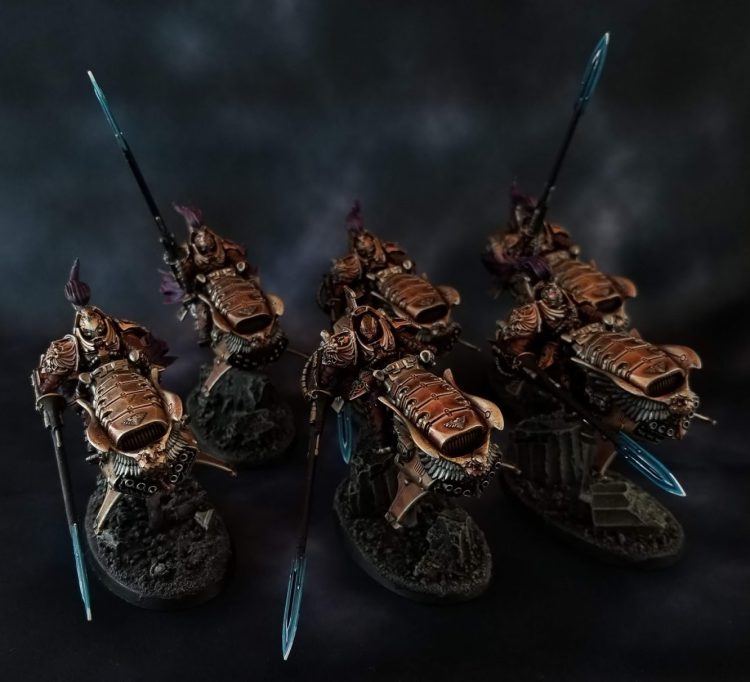
Push threats, ranged threats and board control are the easiest ones to use as examples for this. If you want to plan around using push threats, you need to be able to deploy them over multiple turns. A few units are sufficiently dangerous to pull this off by themselves (Possessed come to mind) but a lot aren’t – and that’s why you see successful armies in this category run multiples of their best push units, be it Sanguinary Guard, GSC Acolytes or Shining Spears.
For ranged threats my benchmark for this is simple – given the first turn and good terrain, could my army vapourise pretty much any single unit of my choice from the opponent’s army? Barring weirdness like Tau Drones, if the answer is “yes” then the army is good at projecting ranged threat, if “sometimes” then it might merely be adequate. That could be fine – but if you don’t have a plan more complicated than “so I start blasting” it probably isn’t, and you need more firepower.
Finally, if your plan is to engage in board control you need to think about what happens if your opponent is willing to dedicate an entire turn to nothing but blowing away the infantry you’ve flooded the board with. Do you have any left after that? If the answer is “lol I could suck up three more turns of that” you’re fine, but if you’d find your army looking pretty sparse at that point, we’re once again back to adequate territory. That doesn’t mean controlling the board can’t be part of your plan, but it has to come with something else that keeps your opponent under sufficient pressure that they can’t afford to spare a turn to firehose your infantry off the baord.
Consider Your Weaknesses
Most armies aren’t good at everything, and that’s fine.
This has been my TED Talk.
Seriously though – your army is going to have weaknesses, if everyone could build an army that was brilliant at everything then competitive play would suck. Most of the periods where competitive play has kind of sucked has been where an army exists that’s great at everything, and GW are smart enough these days to stamp on them pretty quick. The best lists in a normal metagame have a lot of strengths, but while playing or tinkering with them you need to consider what to do about their weaknesses.
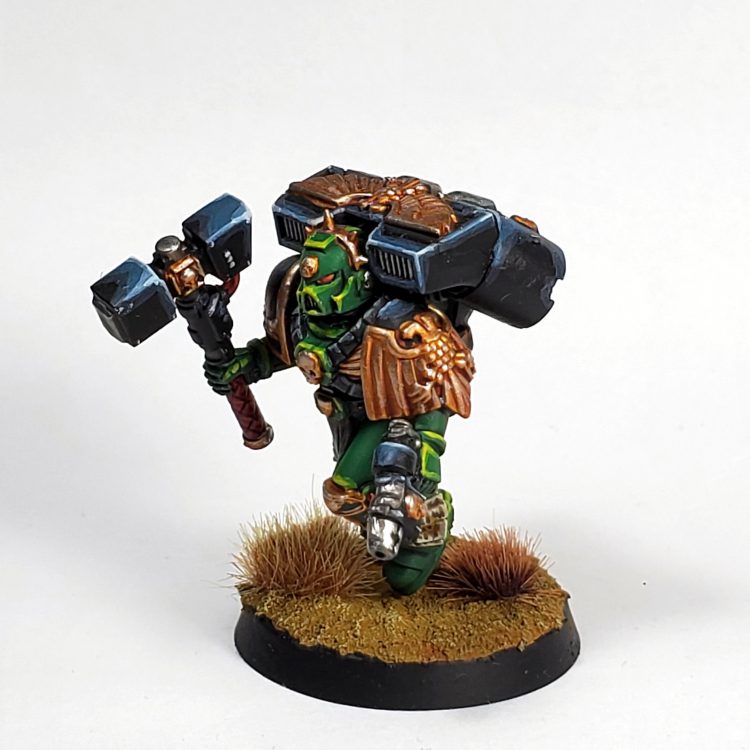
Sometimes, it can be possible to close these with cunning list design. Reactive threats tend to overperform for their cost when used to specifically shore up weaknesses, and your codex might give you access to tools that do this cost-efficiently. Smash Captains used as a counter to Knights is the archetypal example of this – the average smash captain costs about a third of what Knight does, but a well built one will kill a Knight outright if they get too close, and the very best ones can close the gap so efficiently that the Knight player has to play their whole game around not getting hit by one. If you fear that your game plan crumbles to being stamped on by a giant robot, then investing in an roided up man with a really big hammer is probably a good investment.
On other occasions, however, you won’t have easy access to a unit that can close a weakness, so instead have to use ugh strategy to deal with it. Have a look at the next section where we talk about the kind of weaknesses that an army lacking in a role tends to have, and consider that when building your game plan. If you aren’t good at shooting stuff, don’t build a plan that relies on hovering about 24″ away from the opponent – you won’t win. In addition, at the point you’re going through your opponent’s list you can use this knowledge to try and assess what “game over” situations might look like for you – game states you wouldn’t be able to recover from if you hit them.
Let’s imagine you’re a ranged threat heavy army that hasn’t invested in any reactive threats. If your opponent has powerful push threats and their first wave reaches your lines intact you’re likely not going to recover, because you won’t be able to efficiently prise them out of your ranks. That means you need to prioritise taking out their fastest threats first, because even if they’re not the strongest they’re the ones that most immediately threaten to put the game beyond recovery.
Swap Units for Impact
This last point is a bit nebulous, but I think there is something real here, so it stays in.
Tinkering with army lists is great fun, swapping units in and out to see what works and what doesn’t is one of my favourite parts of competitive play. Like with anything though, you usually have a huge number of possible options, so it’s helpful to be able to discard some off the bat, and thinking about unit roles helps do that. If the roles represent the things that an army might be good at, then a unit change is probably only worth considering if it feels like it might meaningfully change a list’s capabilities in one of them.
The idea of bucketing a list’s strength in a role as “none”, “adequate” or “good” helps a lot here. You’re looking for changes to your list that shift you from “none” to “adequate” or “adequate” to “good”. If a change manages to do that then great – it’s probably worth a go. If it doesn’t then ask why you’re doing it – if the answer is because it lets you free up some points to make other changes then go wild, but if you can’t articulate what capability it’s improving, it might just be re-arranging the deckchairs.
A good example of this was something I ran into when making the final changes to my list for Battlefield Birmingham. I had about 150pts left, a spare detachment slot and one each of a fast attack and heavy support among my existing units. Initially I put a couple of units of Swooping Hawks in the list to fill out an Outrider. However, the list already had adequate board control and harrassment capabilities, so adding the Hawks didn’t feel like it pushed either of those to “good”. With a bit or re-arranging, I realised I could find the points for a couple of units of Dark Reapers instead, and on assessing the list’s firepower that felt much more meaningful – it was hovering on the high end of adequate, and putting the Reapers in pushed it over the line to having the flexibility to try and alpha strike almost any target off the board. While post-event analysis gave me some even better ways of using the points, the decision to run the Reapers definitely gave me more impact over the weekend than Hawks would have, and it was the thought pattern of “are the Hawks actually making my army better at anything” that led me to that correct decision.
Analysing Army Weaknesses

When you have a complete army list in front of you, whether yours or your opponents, it should be at least reasonably clear what roles the units are operating in, and thus which roles the army has on lockdown and which it’s much lighter in its commitment to. By looking at what an army isn’t good at you can pick out weaknesses, and identifying those either lets you play to mitigate your own or brutally and mercilessly exploit your opponent’s, just like the Raven Guard do (Corrode: you really had to reach for that one, huh.)
Exactly what weaknesses manifest in a given matchup depends a bit on the opponents list, as not all armies will be well set up to exploit some of them. In addition, some roles can provide a reasonable amount of coverage for weaknesses opened up in others, especially reactive threats. Still, I think it’s definitely possible to generalise some possible weaknesses that might arise from a low commitment to each role, and talking through why should help demonstrate how to evaluate it. With that in mind, here’s a short summary of some example weaknesses that armies lacking in a role might have. You’ll notice very quickly that a lot of them are phrased in terms of interacting with armies strong in other roles, and that’s definitely intentional – we’re not exactly playing rock paper scissors, but you can start to see how they interact.
Push Threats
An army without push threats can struggle against a force containing strong tarpit and board control elements. Without the strength of a push threat to smash one part of the opposing forces, board control armies can envelop and overwhelm them, while against armies with powerful tarpits they’ll struggle to seize positions. They need to prioritise using their other threats to prevent board control armies from spreading out, and ideally avoid or distract tarpits.
Ranged Threats
An army without ranged threats can fall behind in early scoring because of not being able to score kills, and end up losing a game to attrition if they’re too cautious. An army without strong ranged threats needs to be prepared to control the board, and willing to make some early sacrifices to close the game into a range where they can operate. Alternatively, they can plan to make some of their push threats active very early in the game through buffs and enhancements.
Reactive Threats
An army without reactive threats can struggle to pull itself out of a bad position if it falls behind, especially against push threats. It can also be especially vulnerable to harrassment units. Without dedicated reactive threats, the army may need to dedicate some of its other units as a reactive force, and needs to prioritise dealing with push threats at a distance.
Force Multipliers
Force multipliers often help units to broaden the targets that they can engage with (e.g. Doom allowing basic shurikens to tank hunt), so without them an army can find itself stripped of the threats that are relevant in a given matchup then overwhelmed. They can also lack the ability to “punch up” for a turn to clear out a key target. Without force multipliers, an army needs to itemise how it’s going to deal with opposing threats even more carefully than normal.
Board Control
Armies without board control tend to struggle in missions with high numbers of objectives, as they don’t have the tools to consistently contest lots of them. They need to prioritise other avenues of scoring. In ITC in particular, they may wish to go second, as this will allow them to potentially “spike” a few turns of hold more through use of sacrificial ObSec units.
Tarpit
Armies without a proper tarpit can’t rely on being able to hold a position without committing large amounts of their forces to it. They can struggle against fast push threats, and need to make use of other positional capabilities such as screening to delay them rather than trying to confront them.
Screening
Armies without screening units will struggle against deep striking push threats and psychic damage. In matchups where this is a threat, armies without a dedicated screen need to identify and sacrifice other units to fill the role.
Backfield
Armies without dedicated backfield units are very vulnerable to harrassment units, and to a lesser extent high board control armies on some deployments. To mitigate this, they may have to keep more of their forces back in a castle than they would otherwise choose to.
ObSec
Armies without any ObSec have to over-commit to secure objectives, and lose opportunities to steal objectives to score points and win games when going second in ITC. They need a game plan heavily weighted towards other avenues of scoring, or powerful Tarpit units to completely seize objectives
Harassment
Armies without harassment threats let their opponent move much more aggressively, as they don’t have to be as cautious in protecting their backfield and flanks. They likely want to bring additional board control or reactive threats, either to ensure the opponent still has to deal with forces in multiple parts of the board or punish them for overcommitting.
Slot Fillers
Jamming as many punchy units into a list as possible without considering overall construction can mean that you end up with few or no CP to spend on the things that often turn those good units into great ones. An army that consciously skips on slot fillers will likely be short on CP. Careful planning of how to spend the points they do have will be needed, and they’ll have less access to emergency re-rolls or key stratagems.
Counters
No army needs counters, but in especially skewed metagames it can be unwise to leave cost-efficient ones on the table. If there is a particular list that everyone is talking about, don’t weaken yourself by skipping a good counter your army has access to.
Examples
Just like last time, we’ll finish off by applying what we’ve talked about in the article to a few army lists. For each, we’ll go through the list identifying what roles each unit plays, and then discuss what that might tell us about the army’s weaknesses.
Wings’ Aeldari
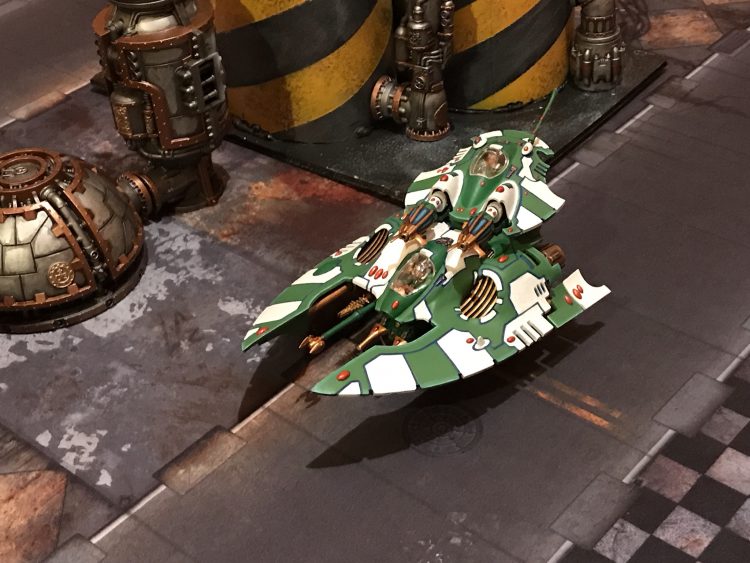
First into the thunderdome, and it’s only fair, is one of my own lists. This is the post-event update to the army I took to 5th place at Battlefield Birmingham.
Army List - Click to Expand
The roles in this list are as follows:
- Farseer – Force Multiplier/Reactive Threat
- Warlocks – Force Multiplier
- Dire Avengers – Slot Filler/ObSec
- Storm Guardians – Slot Filler/Screen/ObSec
- Shining Spears – Push Threat/Reactive Threat
- Wave Serpents – Board Control/Harassment/Force Multiplier (in that they allow the infantry to deploy safely)
- Crimson Hunter Exarchs – Ranged Threat
- Autarch – Force Multiplier/Reactive Threat
- Night Spinner – Ranged Threat/Backfield
- Dark Reapers – Ranged Threat
- Archons – Backfield/Slot Filler/Counter (access to Vect)
- Raider Kabalites – Harassment/Board Control/ObSec
- Foot Kabalites – Backfield/ObSec
So, what’s this army missing or short on? Completely missing we have tarpits, and it’s pretty short on dedicated screens and that would suggest that it runs the risk of getting kicked in if an opponent managed to rush it down. That is absolutely true – I’ve played armies like this a lot, and once in a while you have a game, especially against armies like Knights where everything is a push threat, where you just get absolutely overwhelmed and crushed. In that situation, it has to use mobility to space out when it has to confront the threats, using a combination of speed and Phantasm to get to a situation where there’s always a clear closest threat to target and annihilate them one at a time. That’s especially true because of the force multiplier of Doom, allowing it to work at top efficiency when playing like this.
In terms of what it’s moderately good at, the army has one powerful and durable push threat, and a decent amount of board control. Neither are potent enough to base the overall strategy on though – there are plenty of reactive threats that you can’t push a single squad of Spears into and expect to win, and the board control is based on mobility rather than numbers, meaning it will get overrun if it tries to pull it against a horde of Orks. It also has adequate harrassment capability, with the Raider threatening to deep strike in and take control of an enemy backfield if they aren’t careful.
The army’s strength is in ranged threats – a set of hard to remove, pretty broadly applicable shooting units that can target almost anywhere. Taking all of this together you get a pretty reasonable read on what the army’s strategy is – use the middling board control, harrassment and push threat capability to keep the opponent busy while the ranged units do their work. That tends to work pretty well, but if the opponent has stuff that can just charge into the guns with complete impunity, it can shatter and fall apart.
Naramyth’s Training Army
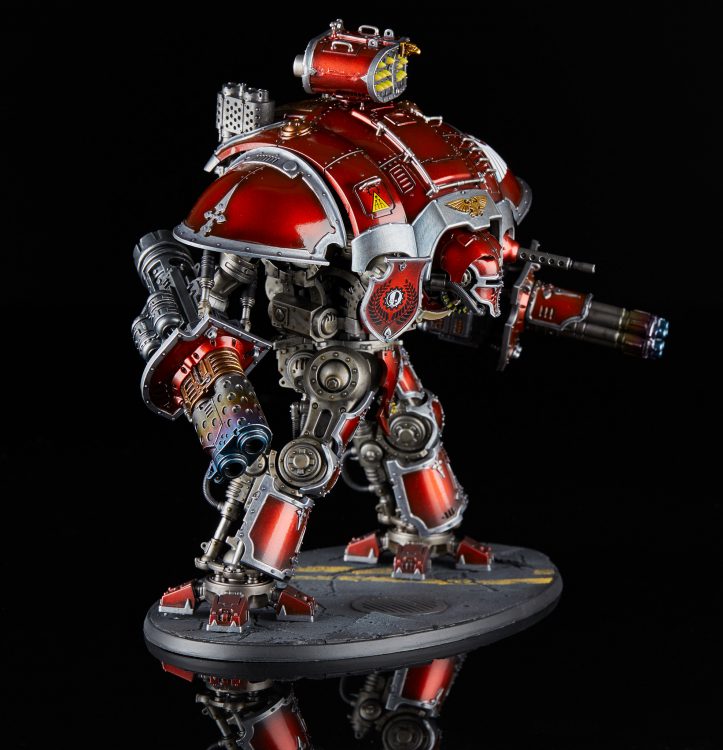
Returning from last time, because consistency is big and clever, we have Naramyth’s training army:
Army List - Click to Expand
This is also nice and easy to go through, because it doesn’t have that many distinct units:
- Knights – Push Threat/Ranged Threat/Board Control
- Scions – Harassment/ObSec/Screening
- Tempestors – Slot Fillers/Force Multipliers
- Tech Priest – Force Multiplier/Counter (access to Graia strat)
- Skorpii – Ranged Threat/Backfield
Any triple Knight army is going to be very high threat, and this is no exception – Knight Crusaders are overwhelmingly the best Knight because they combine the push and ranged threat role better than any of the others. This army excels at pushing down an opponent’s throat, and is exactly the kind of force that can occasionally straight up smash the kind of Eldar army I showed above.
However, it also has considerable capability gaps that can be exploited. Its game plan relies on using the Knights as a push threat and board control, but that leaves it very vulnerable to enemy forces containing strong reactive threats. It’s also very light on screening, and isn’t going to be able to defend its Knights from push threats of a psychic onslaught for more than a turn. It’s also very light on ObSec units, and as we discussed when looking at this army last time killing all of them off is pretty easy and very rewarding for an opponent. Finally, while the Skorpii can cover a decent amount of the backfield, they’re a pretty juicy target for harrassment units and against an army that’s invested in them they’re potentially pretty vulnerable.
All told this army does a great job of functioning as a testbed/gatekeeper for testing new lists against, because any army that wants to have a straight fight or win through board control against it had better be real good at its job to tackle this list. However, armies that want to go after it in more subtle or sneaky ways it has plenty of weaknesses that can be targeted.
Devin Swann’s Grey Knights
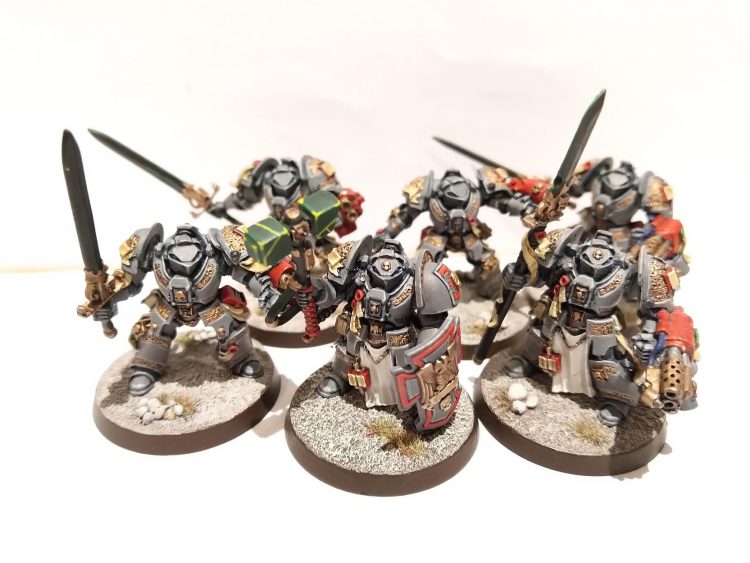
For the last army, I went through recent event winners on 40kstats and have picked out one that I think is a relevant current example, Devin’s Grey Knight list with which he won the Barrie Bash. This has a lot of the common elements of current successful GK lists, and they’re quite an unusual army, so this felt like a great one to look at:
Army List - Click to Expand
This army breaks down roughly as follows:
- Librarian – Force Multiplier/Reactive Threat
- Draigo – Force Multiplier/Reactive Threat/Harassment
- Strike Squads – Board Control/ObSec/Harassment/Reactive Threat
- Brother Captain – Force Multiplier/Reactive Threat
- Chaplain – Force Multiplier/Reactive Threat
- Paladins – Tarpit/Ranged Threat/Push Threat
- Apothecary – Force Multiplier/Reactive Threat/Harassment
Grey Knights are an extremely adaptable and flexible army, and that manifests in the majority of the units being able to not just perform but excel in multiple roles. Like most Marines, all their characters are capable of flexing into being Reactive Threats when needed, and as GK have the added benefit that thanks to their built in teleport strike and the Gate of Infinity power, the ones that are deadlier in melee or less critical to keep near other units can become harassment units in a pinch.
Other units are similarly flexible. Paladin bombs don’t run cheap, but the payoff is a unit that can excel at holding a point, rushing into melee or blasting stuff apart as needed. Finally, the Strike Squads can land on the board in whatever configuration best suits the situation, forcing the opponent to fight on multiple fronts, and also do a tonne of damage the turn they appear, especially if juicy targets have been left exposed to a volley of souped up Smites.
All that said, there are weaknesses here. The army projects a reasonable amount of ranged threat from the Paladins, but at a limited range, meaning that armies that can operate at longer range can either force it to commit with the Paladins through a Gate earlier than it wants, or outshoot them. It also has no dedicated screens , and the first thing the opponent hits is going to be Strike Squads a lot of the time. That’s a bit less of a problem than it would be in some armies, as the buffed denies Grey Knights throw out can suppress the damage from enemy Smites, but it does mean that if your opponent has reactive threats they’re going to be operating in a target rich environment, and every body lost hurts. There’s also not much here that really wants to stay in the backfield, forcing it to use valuable units to hold backline objectives without really screening them off from harassment.
Finally, a lot of the damage dealing capability here is reactive, so if the opponent can prevent them landing for maximum effect, perhaps through effective screening, the army can fail to land enough of a punch then crumble – fundamentally, most enemy armies that can survive the initial onslaught aren’t going to struggle to start picking up power armoured bodies. Grey Knights do have some useful tools to work around that – most notably, Edict Imperator followed by Gate of Infinity can put a big hole in an opponent’s screen then chuck a Paladin bomb into it as a big push threat. It remains a weakness however, and certainly of the losing Grey Knight games I’ve observed “didn’t do enough initial damage then lost to attrition” is a pretty common thread.
Wrap Up
That brings us to the end of a second way of thinking about army lists. Will there be a third article? I don’t know yet – it probably depends if I think way too hard about the deeper mysteries of 40k again. In the meantime, I’d love feedback on these concepts, so please do drop a comment wherever you read it if you have thoughts, or to contact@goonhammer.com.
